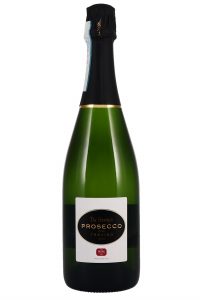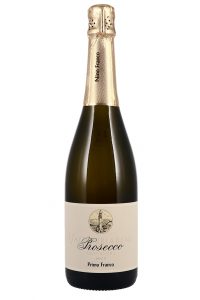The authorised prosecco area covers a massive slice of north eastern Italy that includes parts of at least nine provinces.
How and why things are that way is an interesting and impressive piece of inventiveness and cleverly working within the rules – but a story for another day.
Suffice it to say that prosecco labelled as DOC – Denominazione di origine controllata – can come from anywhere in that vast area provided it meets that classification’s basic rules.
In truth, much of that DOC area comprises flat plains producing sound (yet usually unremarkable) prosecco that will satisfy – but seldom excite.
Like all generalisations, though, that is grossly unfair to those among the region’s producers that consistently create well above average wine.
So, if you see wine from there recommended by someone you trust, go for it.
Otherwise (and with due apologies to the aforementioned local heroes) today’s post employs very broad (but I hope helpful) brush strokes.
Narrowing the Search
Many of those creating above average prosecco operate in Treviso – a relatively small area roughly in the middle of that enormous DOC production area.
So, by choosing DOC prosecco marked as from Treviso, you should tip the probabilities towards getting better wine.
To clarify things (and using the three-tier Council structure of rural England as an example) Prosecco DOC is the “county” and Treviso a “district council area” within it.
For the “parish” level, we turn to two specific areas within Treviso.
And we meet an extra letter
These “parishes” are hiller localities that produce what are generally considered to be superior versions of prosecco – helped, many feel, because the terrain means that tending the vines (and harvesting) has to be done manually.
The higher quality levels there have resulted in these areas being awarded DOCG status.
That extra letter means Garantita – the highest classification in Italy – which involves wines being analysed and tasted by government–licensed judgement panels before being bottled.
The smaller of those two DOCG areas is Asolo which does indeed produce good (and sometimes a little drier) prosecco.
Unfortunately, its wines are not easily obtained in the UK – Morrisons did have one but recently de-listed it.
By far the best known of the DOCG “parishes” is the other one – the twin centred Conegliano Valdobbiadene region.
Nowadays, though, that is often simplified on labels to Valdobbiadene Prosecco Superiore.
So, for the other six letters
For simplicity just concentrate on – and look for – the first three letters of each of those names (“Con” and “Val”).
Conegliano Valdobbiadene comprises 15 communes and consistently produces prosecco which – to me – regularly outpoints versions from the DOC region and usually fully justifies the price premium that DOCG wines attract.
Indeed, the region has even higher level wines (Grand Cru if you like) that scale yet more impressive quality heights.
These are from single communes or vineyards but those wines – and their designations – are not part of today’s simplified story.
In summary, then, that 7 letter selection process
So, here are those seven letters that should normally lead you to better examples of prosecco.
The first one is “G” – look for wine that doesn’t just say “DOC” on the label but says “DOCG”
The other six are in two halves and are abbreviations because few folk can remember (still less pronounce) the twin-centred, 23 letter, DOCG area – Conegliano Valdobbiadene.
So, just look for “Con” or “Val” or both on the label.
There, in seven letters, is the (admittedly simplified) route to the better entry level proseccos.
But what to buy in each category?

As I say, excellent examples of basic DOC wines can be unearthed and here is one that I can recommend without hesitation.
With a controlled mousse and good lemon based acidity, Irresistible Prosecco (£8 at The Co-op and 11% abv) is a cut above equivalent wines and brings us zesty grapefruit and apple flavours, a delightfully clean mouth feel, counterbalancing savoury touches that contain a few cream soda influences.
And for DOC wines from Treviso

Treviso is indeed a hot spot for prosecco and this delightful example would be completely at home with wines in a higher category but the family run unit that make it are content and comfortable with what they make and the designation that attaches to it.
I just love the apple crumble flavours of The Society’s Prosecco (£10.95 at www.thewinesociety.com and 11%) and its creaminess, zippy sherbet lemon acidity touch of ripe pear but overall delicacy and restrained mousse.
Moving to the DOCG region

Illustrating the diversity of wines within this quality level, we start with a version containing savoury elements that contrast neatly with the freshness and extra dash of sweetness that prosecco (as opposed to, say, champagne) often delivers.
Aromatic with a very energetic initial mousse, Finest Valdobbiadene Prosecco Superiore (£10 at Tesco and 11.5%) uses minty and saline touches to underpin its apple, quince and melon flavours and the good pithy grapefruit acidity that accompanies them.
For a little more richness

This example forsakes the savoury elements of that Tesco option and moves up the sweetness level to “Extra Dry” – which, counter intuitively, is actually sweeter than “Brut”.
With menthol suggestions on the nose, Valdobbiadene Prosecco Superiore (£7.49 at Aldi and 11%) is soft and rich with ripe pear and pineapple flavours, orange peel influenced depth and lively tangerine acidity.
Top of the range

We step up in quality (and inevitably price) to some of the best prosecco in this category with a version that has complexity, aging potential, extra lees-derived richness and a higher sweetness level that seems to be concealed by the wine’s overall delicacy and ripeness.
2019 Primo Franco Prosecco Superiore Valdobbiadene (£19 at The Wine Society and 10.5%) is an absolute star with smooth pear, apple and apricot flavours, a floral background, modest zesty lemon acidity, spicy texture and as balanced as a tightrope walker.
Catch up with us again on Monday when we look at my current Top Tips and any news on Supermarket promotions.









8 responses
Exceptional article here Brian. Really enjoyed it and I’m thoroughly educated now in what I need to get for warm days in the garden that have so far eluded us here this summer, on the north Yorkshire coast! I’ll certainly try the Aldi version. Thank you ..Eddie
I’ll second (from rural rather than coastal North Yorkshire) what Eddie says, I haven’t seen such a helpful precis and will bookmark it. Thank you Brian.
I think the Cava v Prosecco argument is silly, they taste different that’s all. We love prosecco, fashionable or not.
Really appeciate your kind words Eddie; thank you. That Aldi one is – to me – a classic version done well and at a great price.
Wow – praise from two folk in straight talking Yorkshire – many thanks guys.
Brian,
What a blinder of an article!
Before reading your article I bought a DOCG Prosseco for my son’s partner and emphasised the G and asked for some feedback.
So good to be given such a succinct explanation of the Prosseco labelling with some samples to try .
I have just been told that I shall have the chance to taste it tomorrow at my son’s BBQ! To be safe I shall have to bring along an ALDI Val bottle….
Thanks Richard …. I was a bit bothered about using such a broad brush but, so far, the feedback has been very positive so that’s gratifying. A reserve for tomorrow would be a good idea and that Aldi one is a traditional example at a good price … Brian
Hi Brian, Don’t know a lot about Prosecco so this was a very enlightening article well written, Prosecco as my fizz of choice is normally way down the list but I know it’s extremely popular so maybe I’m drinking the wrong stuff. I prefer the richer styles of fizz so perhaps the wine society one with its Lees influence is the one to convince me although I have tried the Aldi bottle and for the price it was ok.
Anyway very informative and will make me look at Glera / Prosecco in a different light.
Salud & drink well
Thank you Dave much appreciated. I felt that the second Wine Society one was outstanding and well worth digging a little deeper – it managed to combine richness and delicacy which is hard trick to pull off!